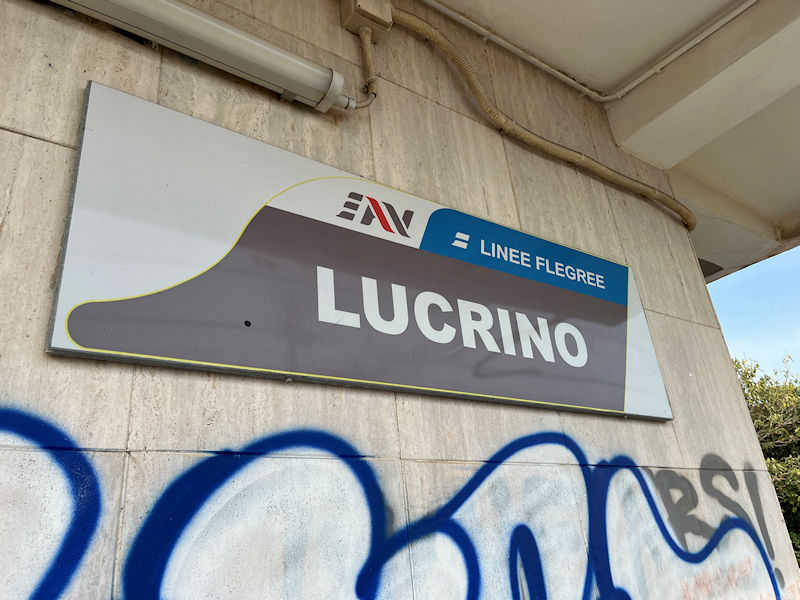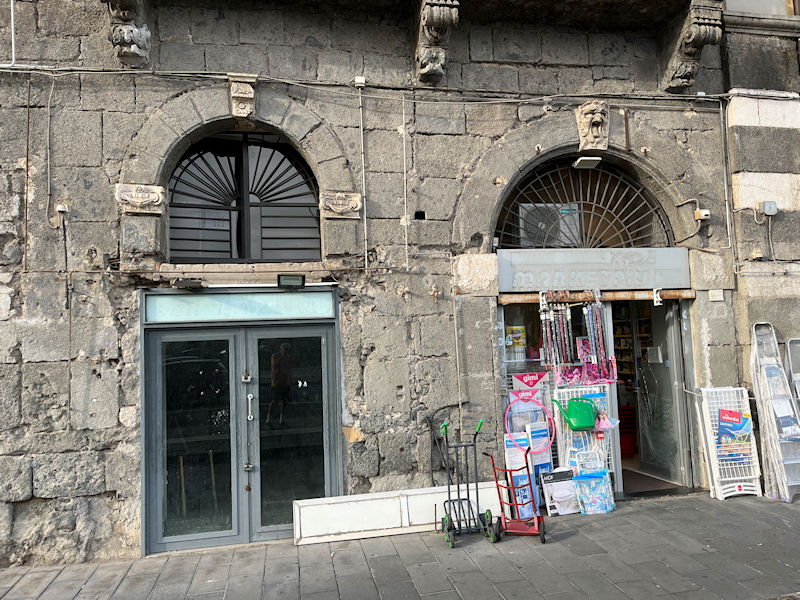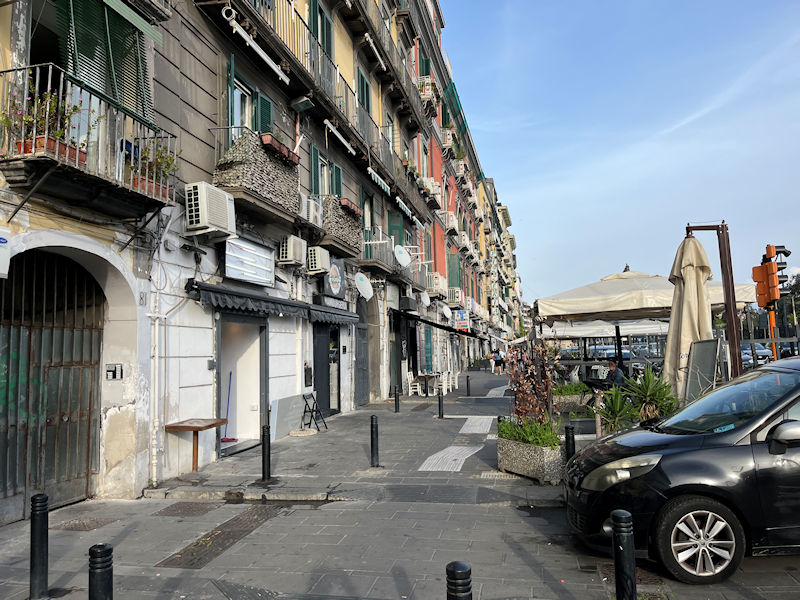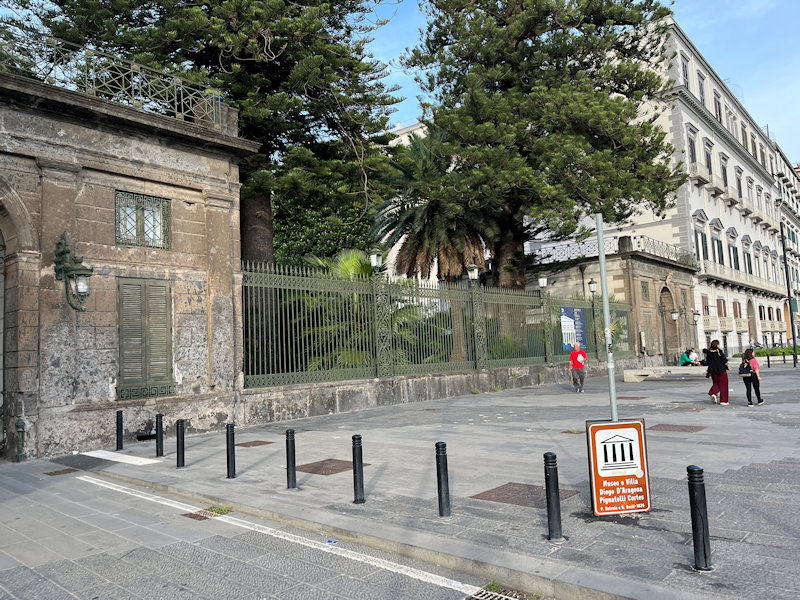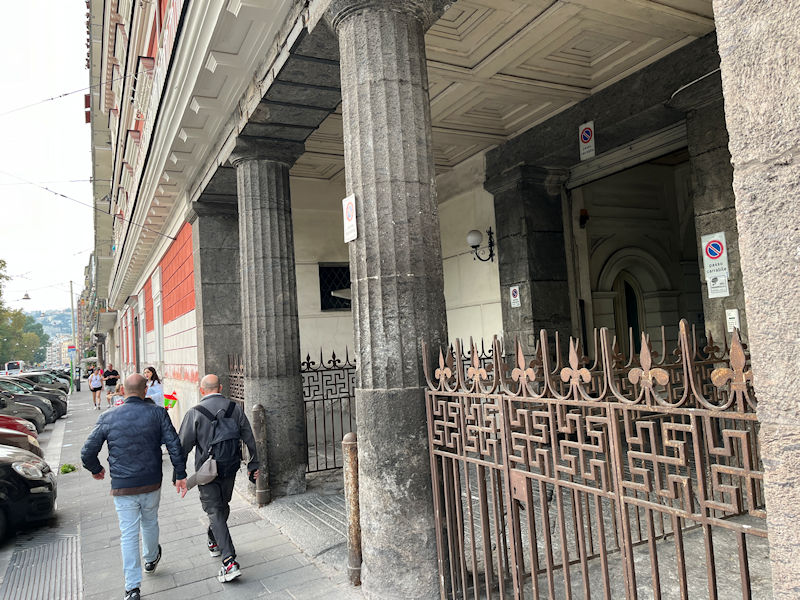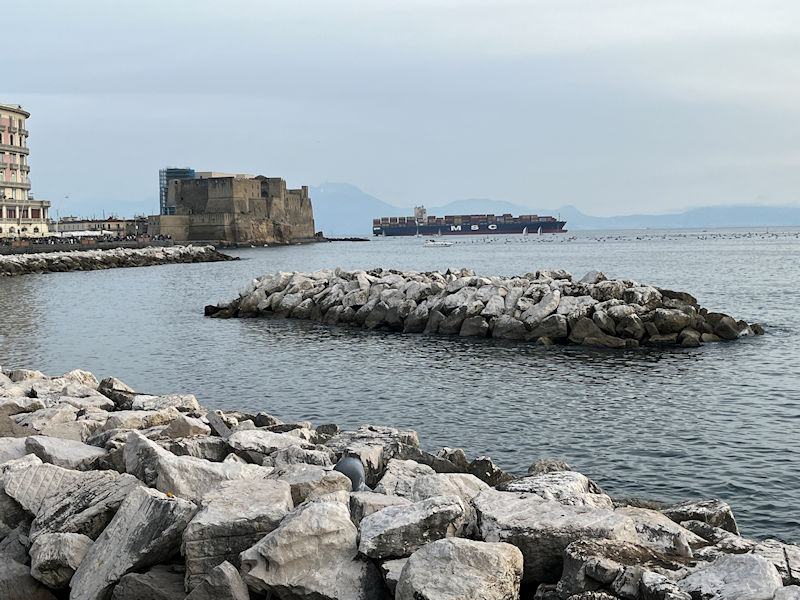You may not find this terribly rewarding unless you're included here, so this is a good time for casual and random browsers to turn back before they get too caught up in the sweep and majesty of the proceedings and can't let go.
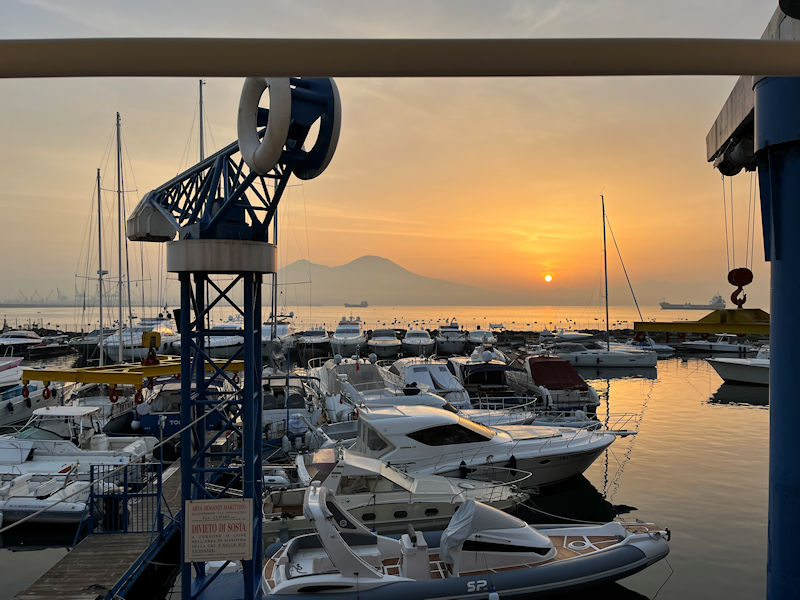
Sun's up, time to get a move on.

A few short hours later, we're on our way to the Lake of Averno, to find out what all that classical era consternation was about.

We're shuffling along the Via Partenope and its parade of hotels, heading for that long green park, just past the Piazza della Vittoria, that runs parallel to the Riviera di Chaia to the Neapolitan district of Mergellina at the far end.
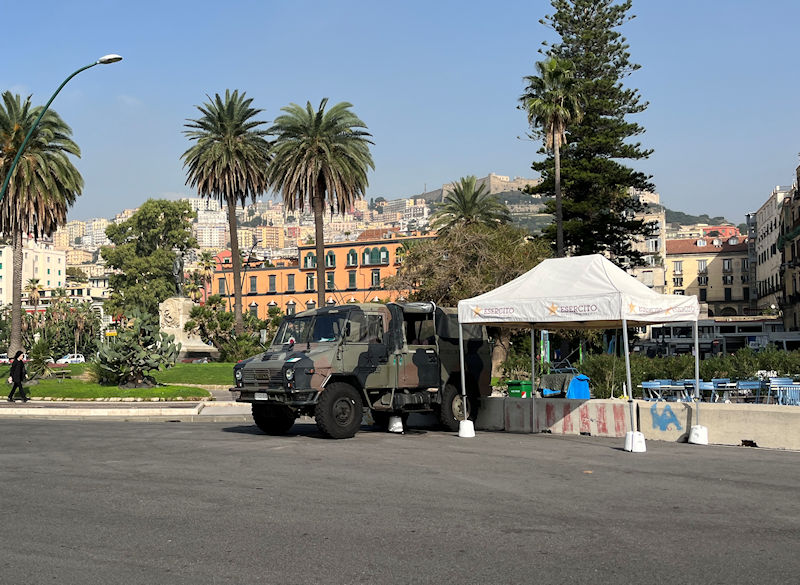
It's good to see that the Piazza della Vittoria is well guarded.
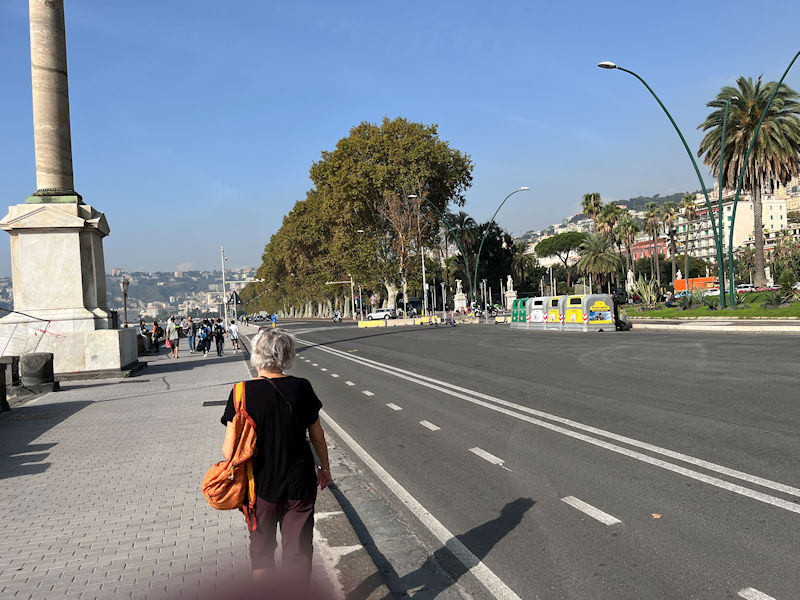

The view across the piazza (past the Monumento a Giovanni Nicotera in the circle) at the Fortress of St Elmo on the Vomero hill, and the Monastery of San Martino on the right.
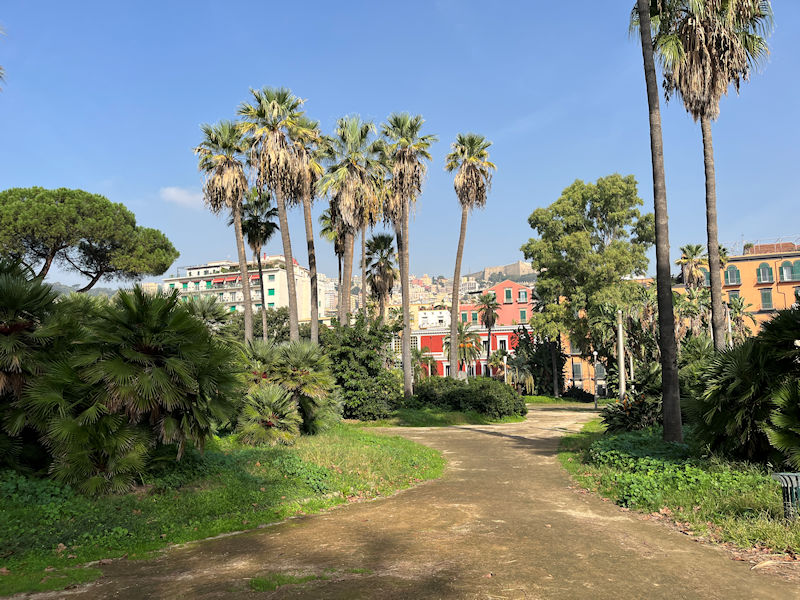
The long, central park is called the Villa Comunale, and we'll follow it for a little while until we get bored with it.
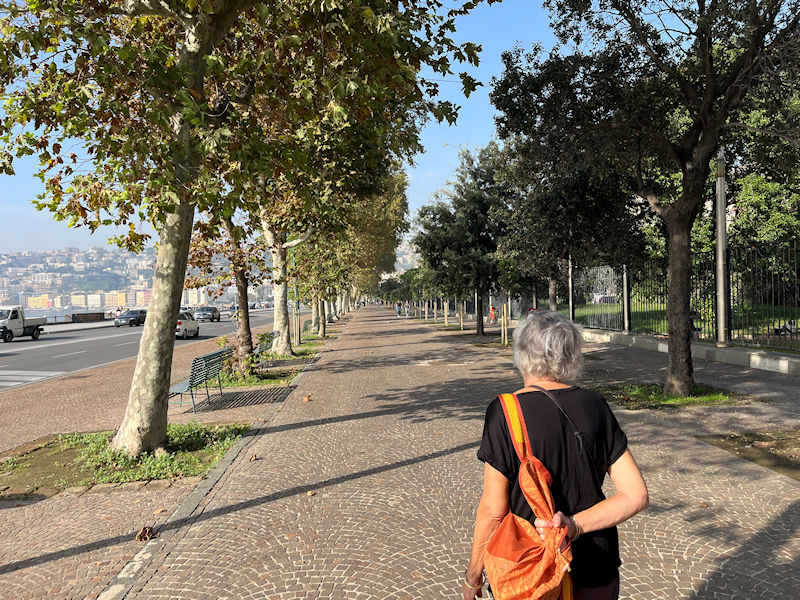
Plodding along, wondering whether the Metro runs out this way. (It does.)
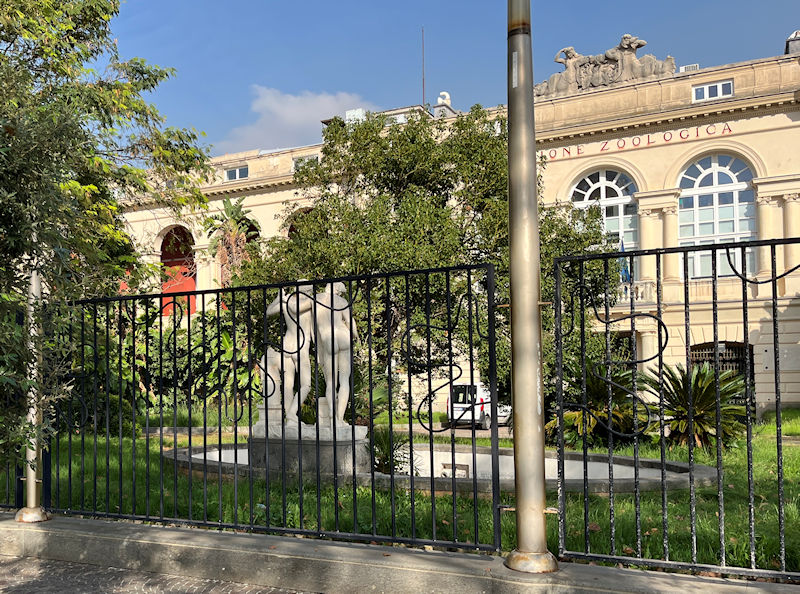
The building announces the Zoologica something, but that's apparently moved uptown, and this is now the Naples Acquarium Anton Dohrn. A nice couple appears about to take a dip in the pool.
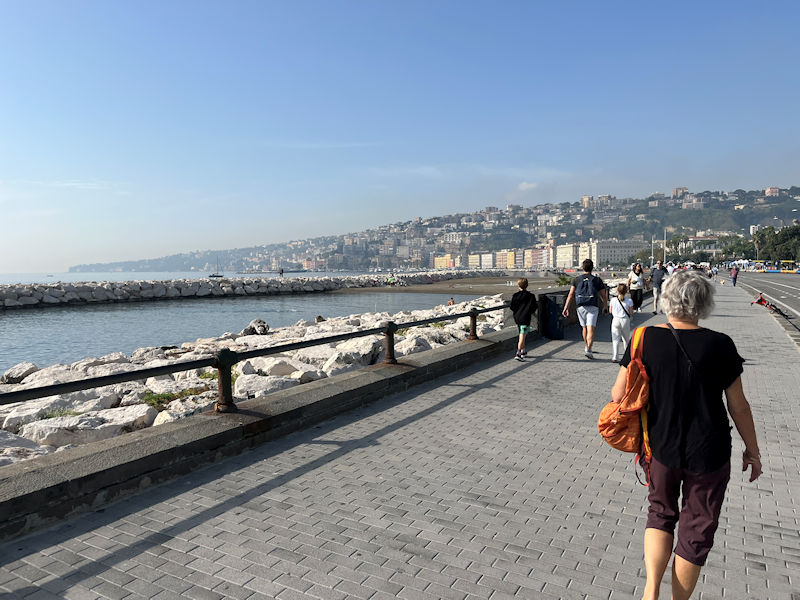
Progress
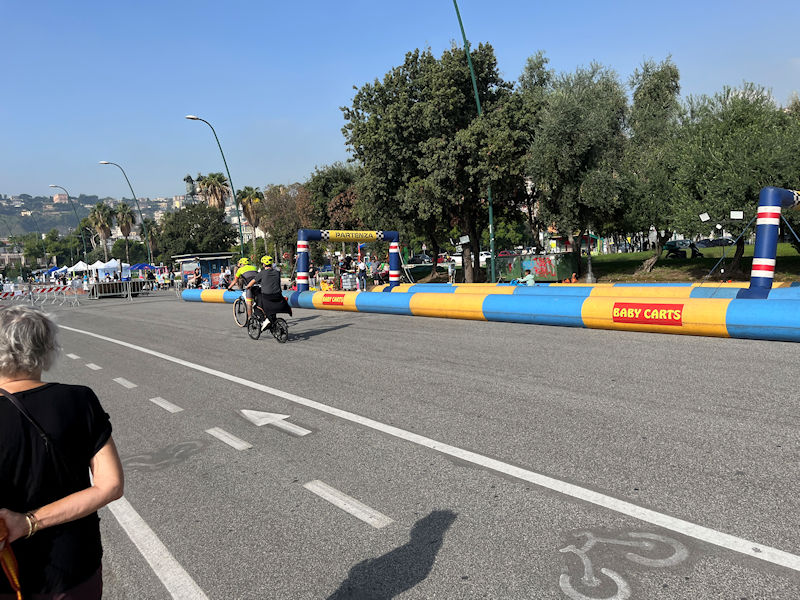
The town has turned out for what looks like a very large collection of activities.
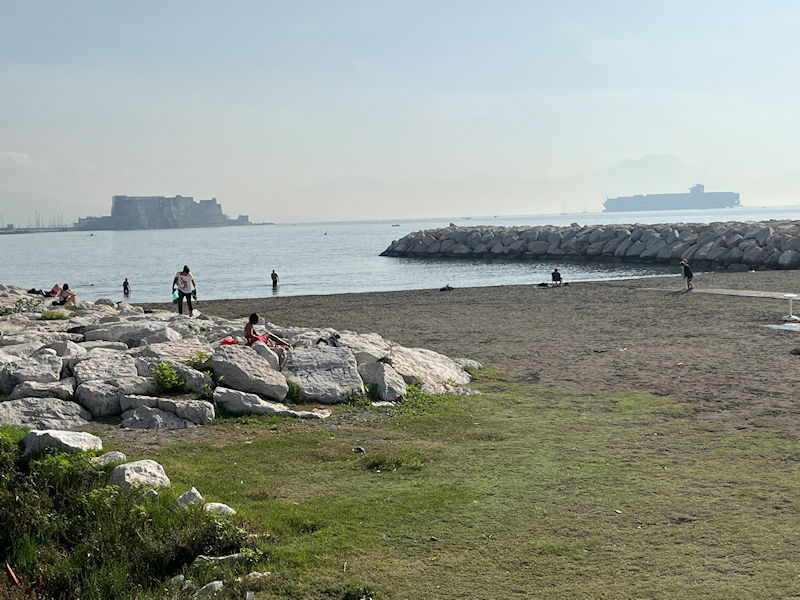
Some late October swimming (imagine!) at the Mappatella Beach. Castel dell'Ovo on the left, that poor old container ship still sitting out there on the right, waiting for something.
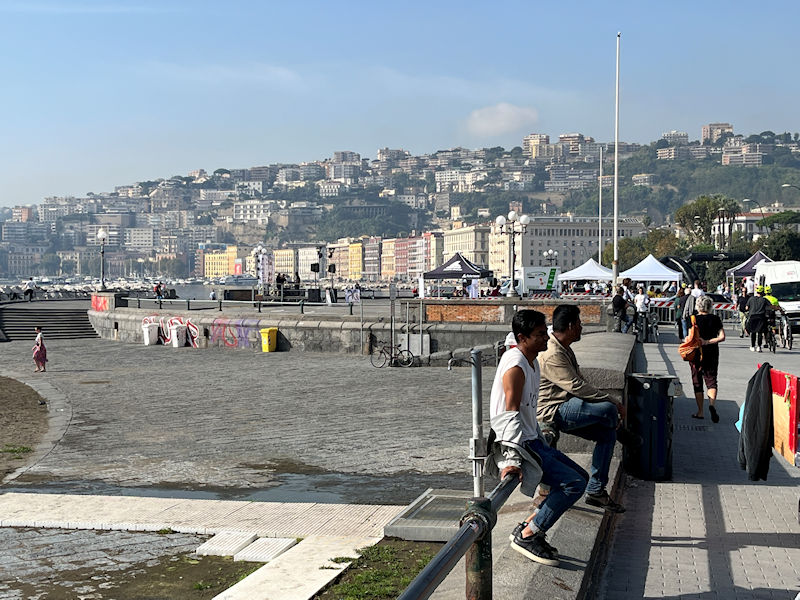
A village fête, what joy
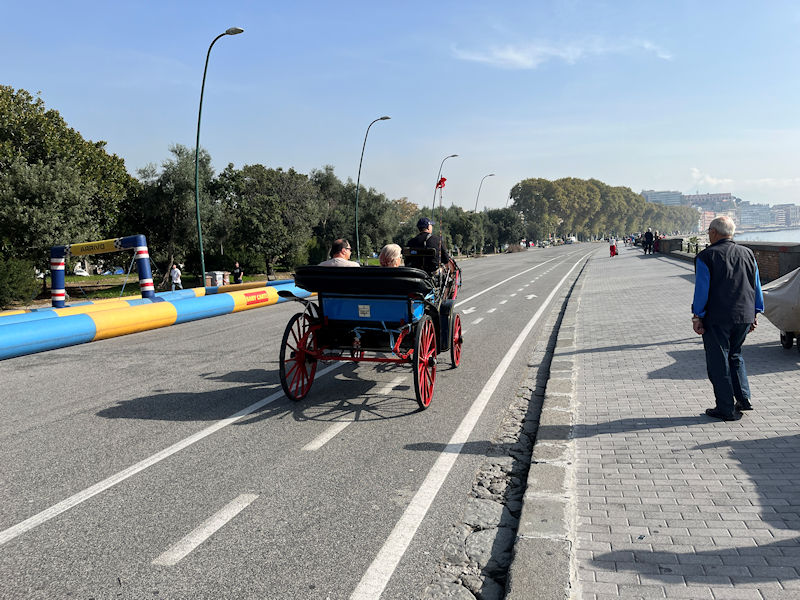
Using the bike lanes, hummph.
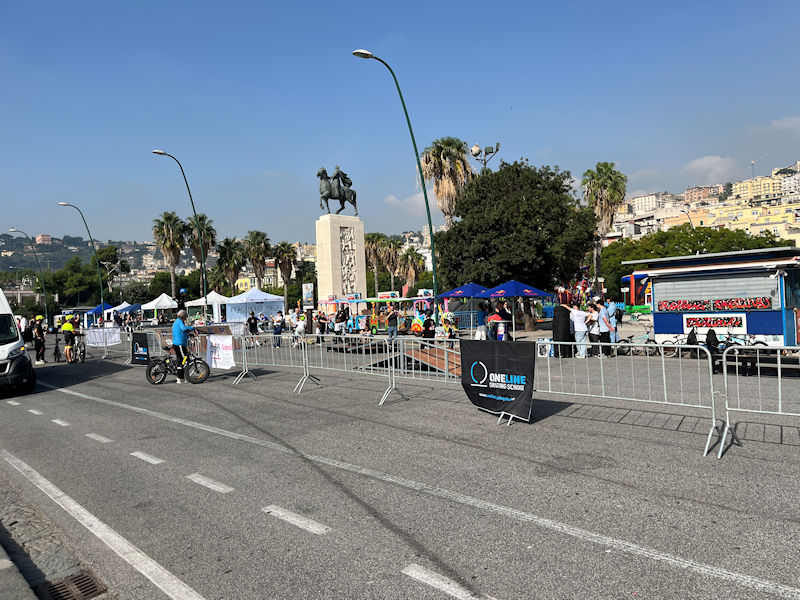
Roller-blading competitions, biking, 'baby carts' for the kiddies, all under the watchful eye of Armando Diaz.
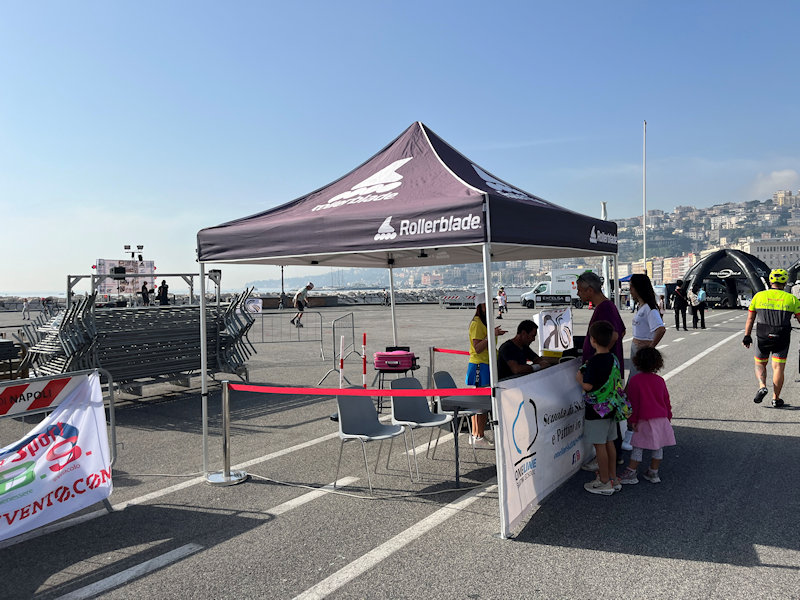
Sign up here! (We might be considered too old.)
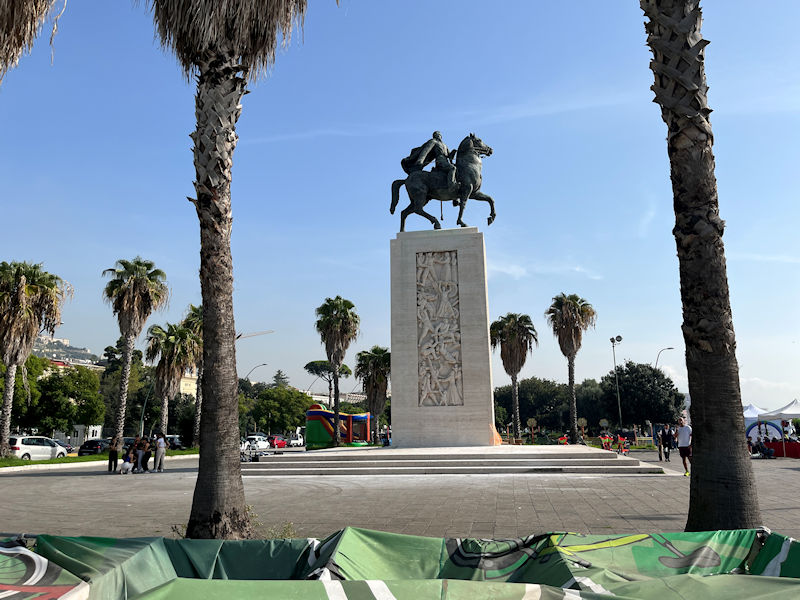
Ah, Armando Diaz. Equestrian status.
'Armando Diaz, 1st Duke della Vittoria (5 December 1861 – 28 February 1928) was an Italian general and a Marshal of Italy' (Wikipedia). He replaced that awful Cadorno in late 1917 so he can't have been all bad. We visited the Monte Grappa memorials a few years ago -- taking over from Cadorna, he stopped the Austro-Hungarian offensive along the Piave River and achieved a few more victories that ended the war on the Italian front. He was made a Duke after the war (the title = 'Duke of the Victory'). [cf Mark Thompson, The white war, 2008)
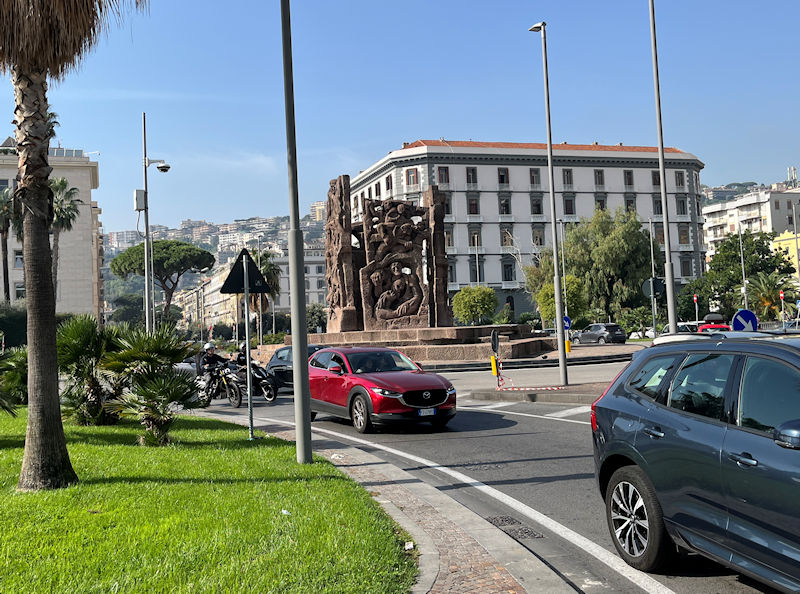
Speaking of monuments: That's the Monument allo Scugnizzo (Monument to the street urchins), aka the Monumento alle Quattro Giornate di Napoli, in the roundabout of the Piazza della Repubblica. It celebrates the four-days rebellion of the young civilians against the last of the German occupation forces in the city, 27-30 September 1943.
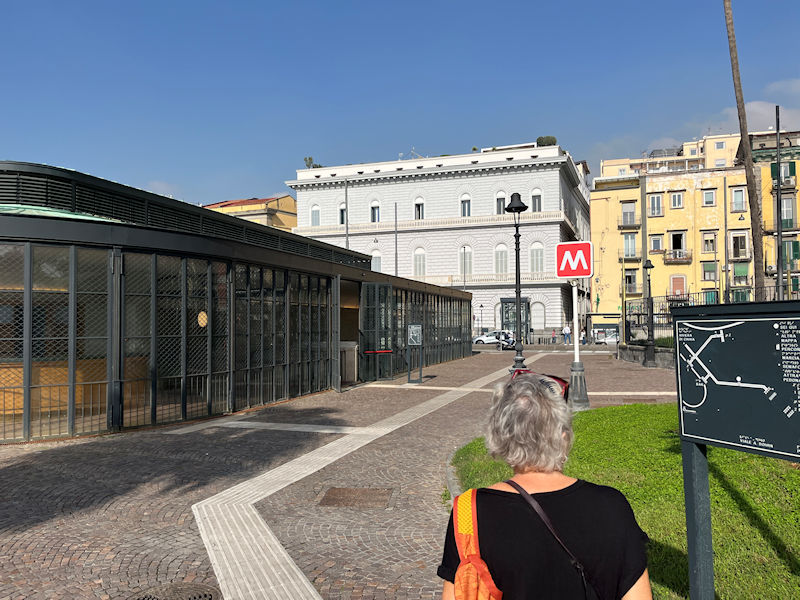
Okay, now it's time for a ride on the Metro.
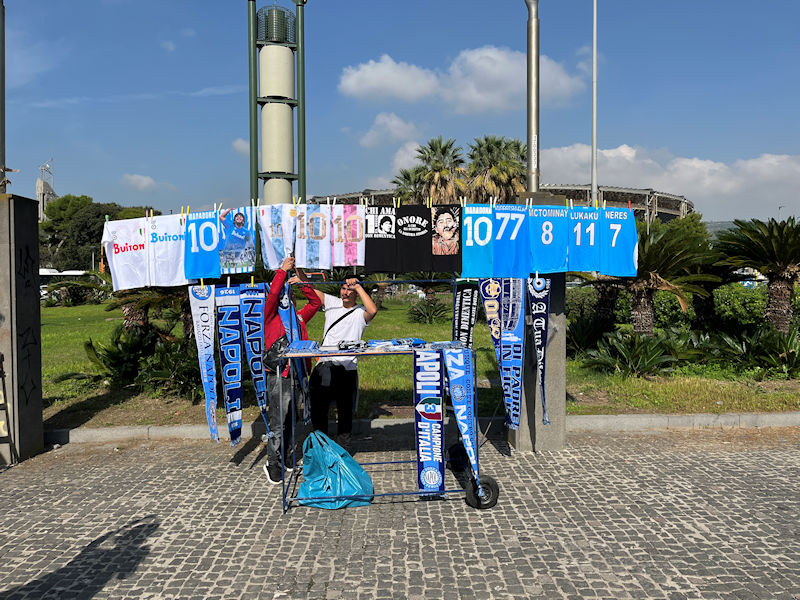
The Metro got us as far as Mostra, end of the line -- that's the Diego Maradona Stadium behind the street vendor, but we were fortunate to be directed to a regular train line that got us as far as Pozzuoli.
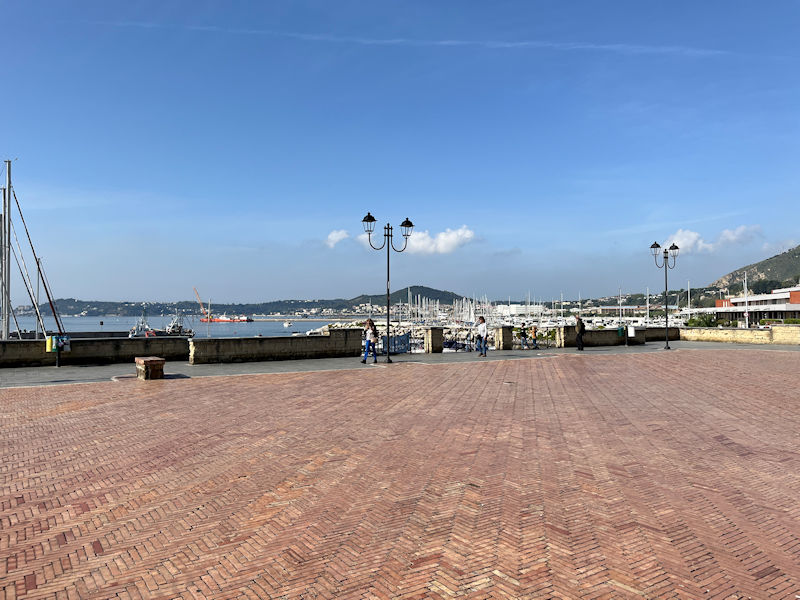
The Pozzuoli waterfront -- we're evidently a mere few miles from the Lake of Averno, but . . . well, but.
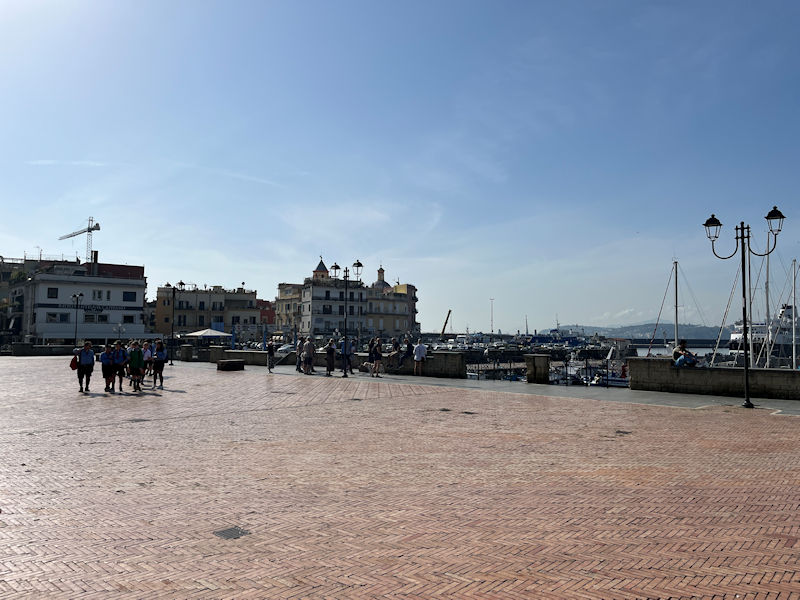
What now?
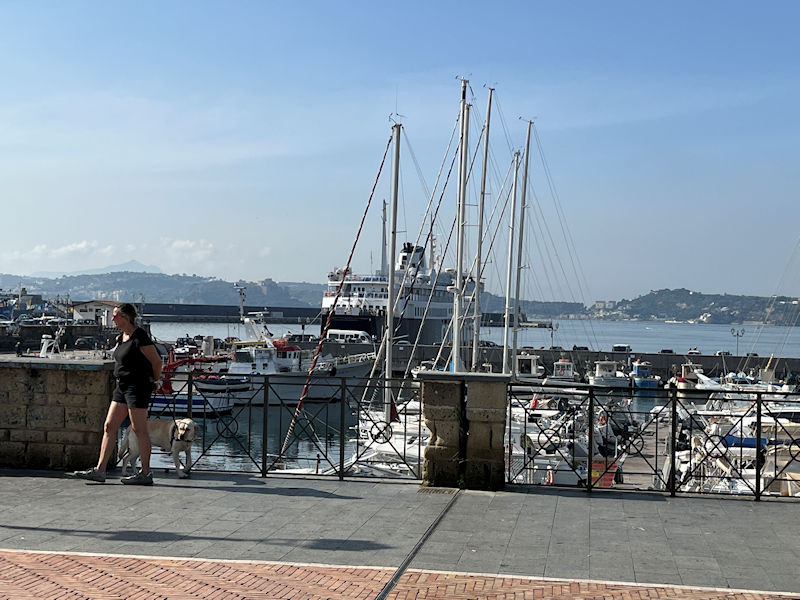
That's the ferry to Ischia (there's an idea!).
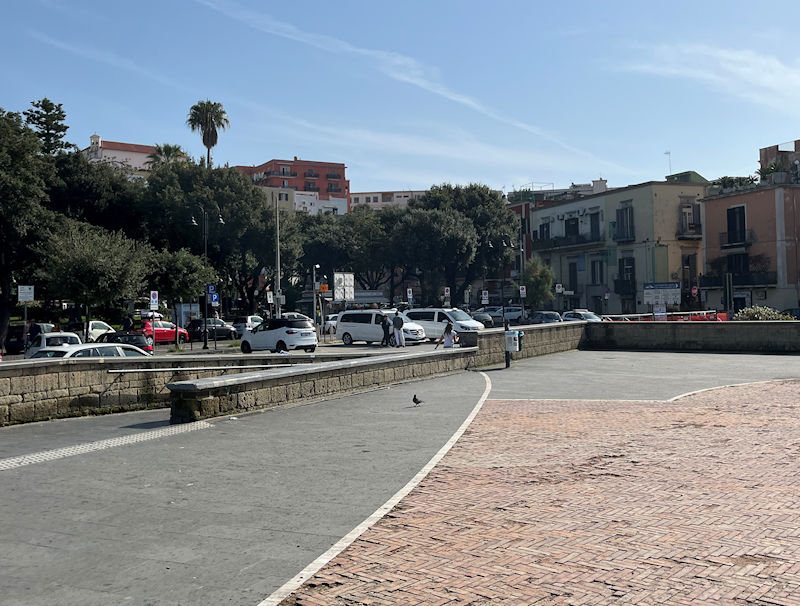
Wait! A taxi rank! We're saved.
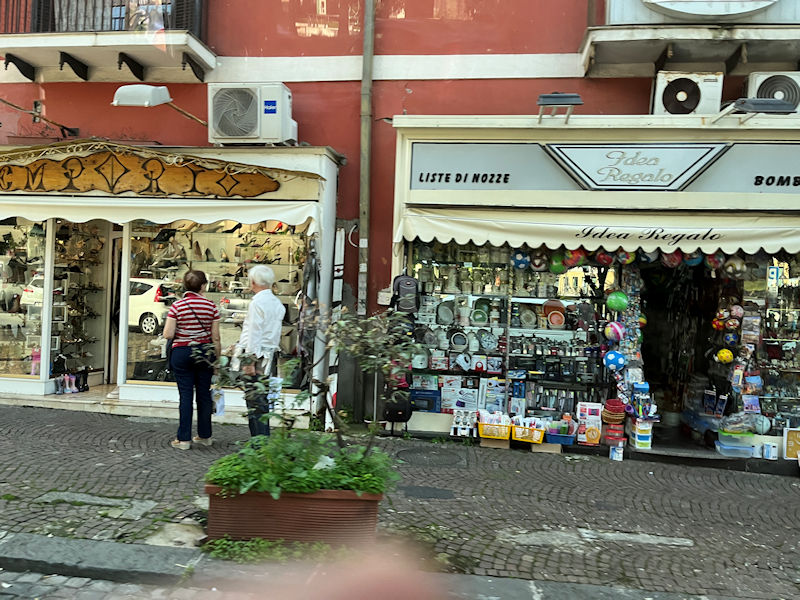
Off we go.

Our voluble driver is pleased to point out the sights and describe the lake for us.
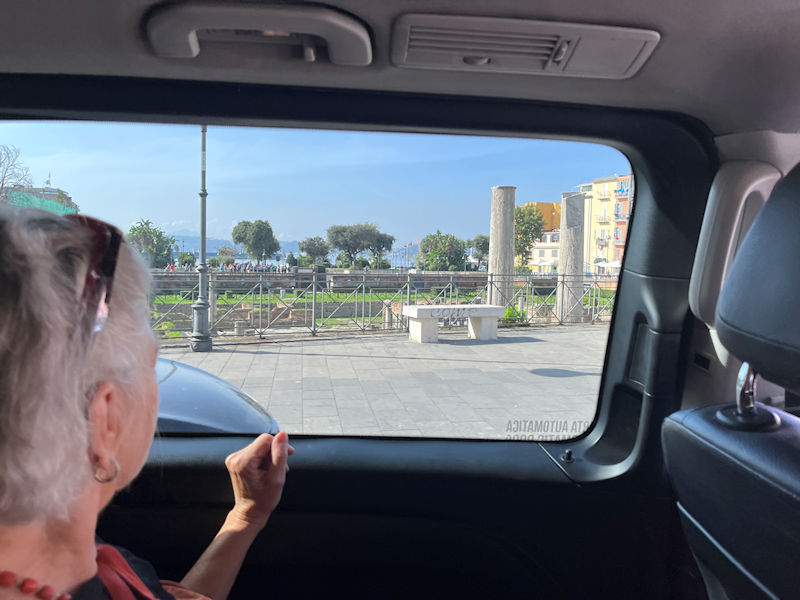
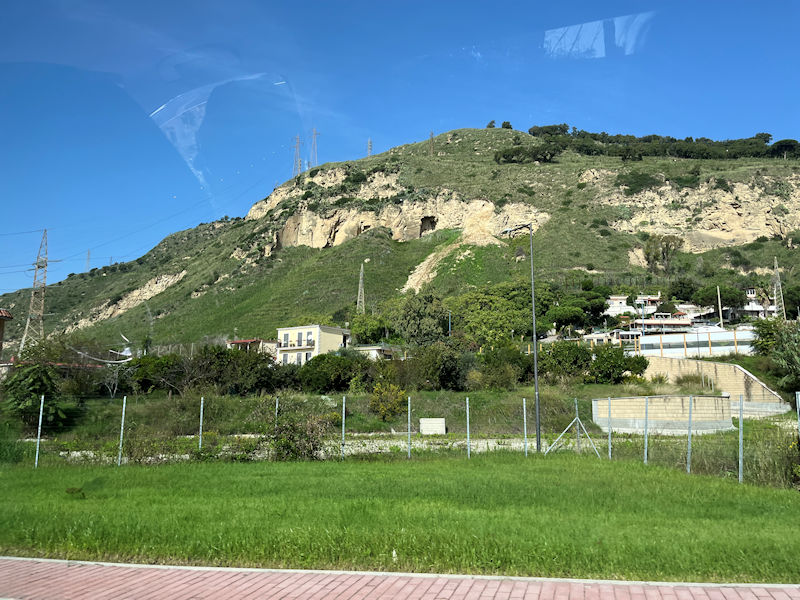
And before actually taking us close to the lake itself, he . . .
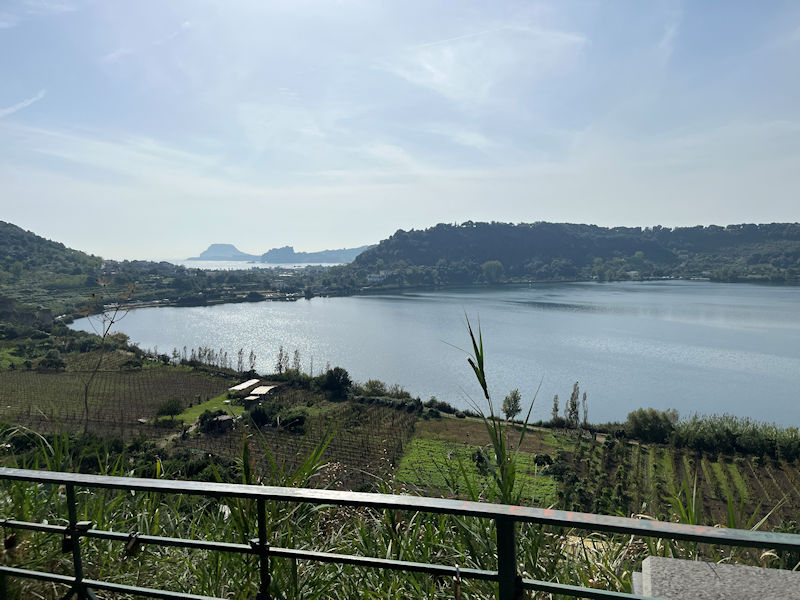
. . . ferries us to an overlook point on the main road and points out the local sights. (That could be the Castello Aragonese di Baia and (behind that) the Capo Miseno off in the distance.)
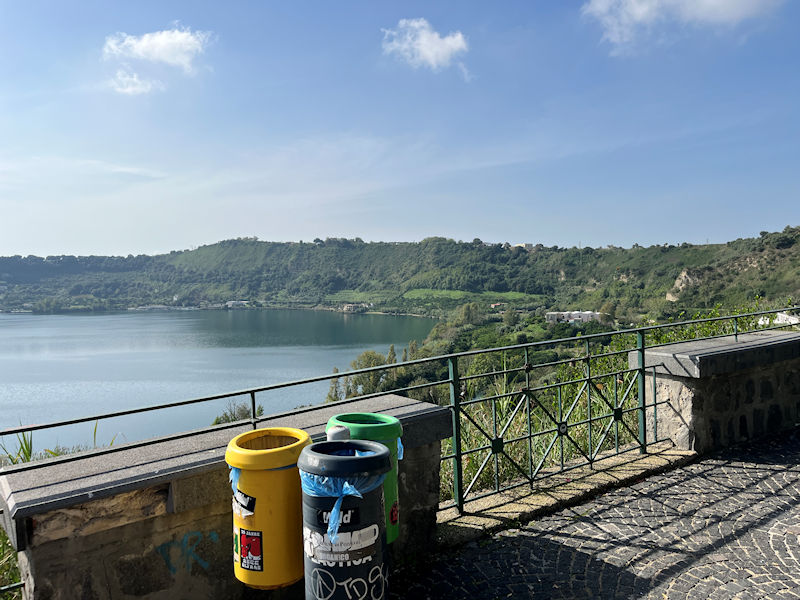
A veritable crater-lake, and perfectly round

And he offers to take a photo of us.
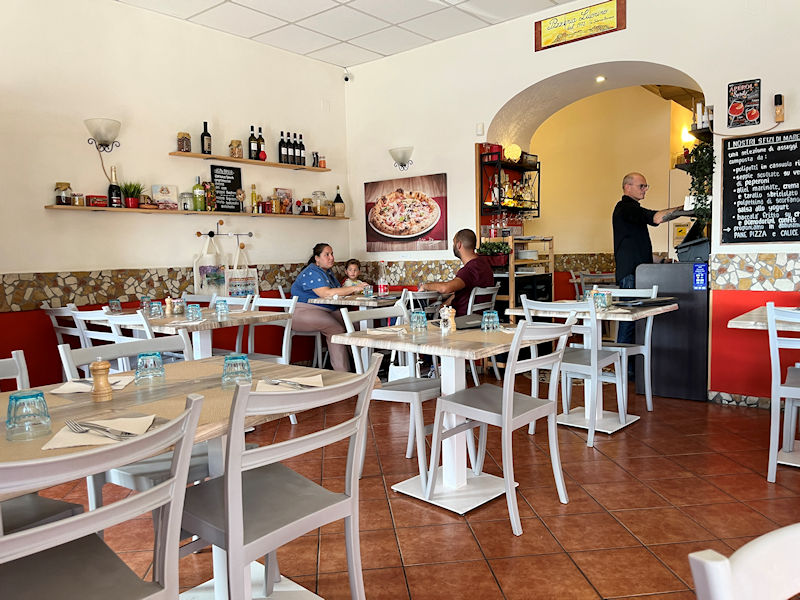
The driver drops us off near the seaside to take lunch with the friendly people of the Pizzeria Locrino across from the local rail station, and then . . .
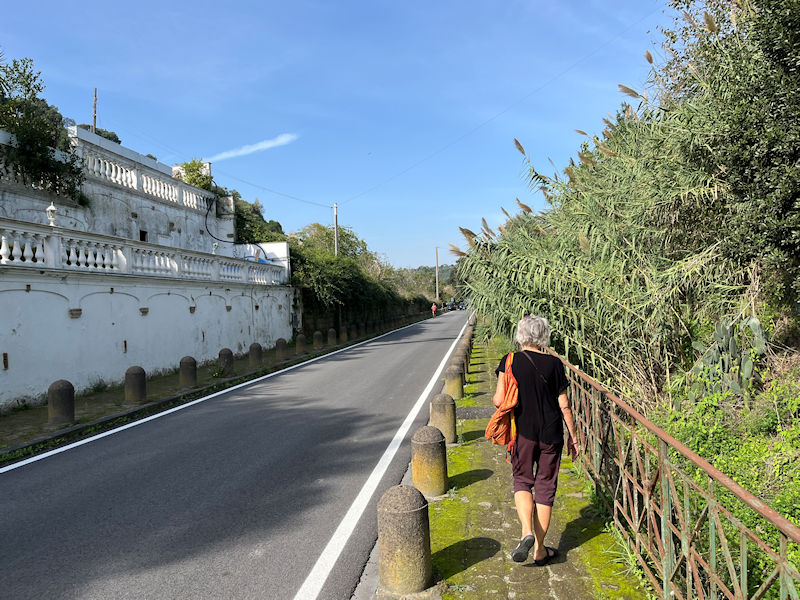
. . . we proceed to the 800m walk out to Averno.
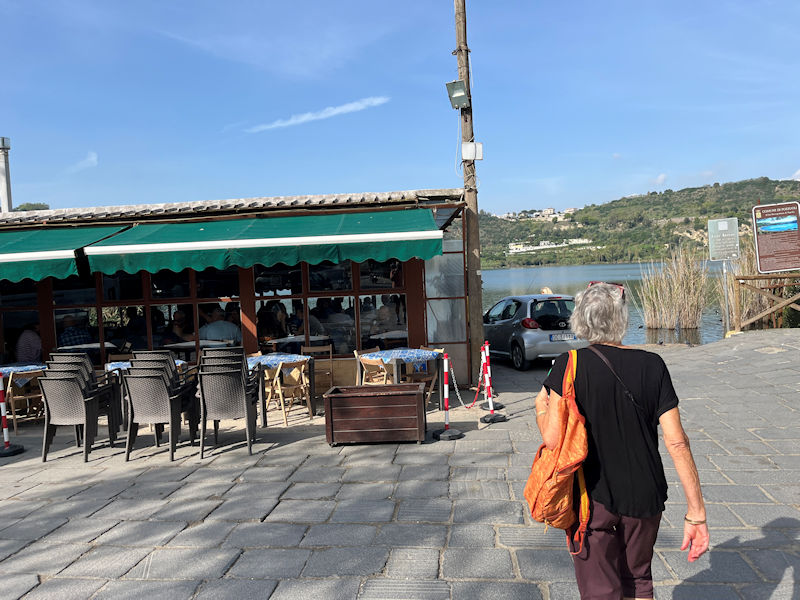
Among the very few commercial establishments around the lake shore, that's the Caronte restaurant, which sports a very unfriendly proprietor who, when we'd completed our walk we stopped in for a coffee, rudely shooed us away if we were not going to order a meal. Anyway, here we go . . .
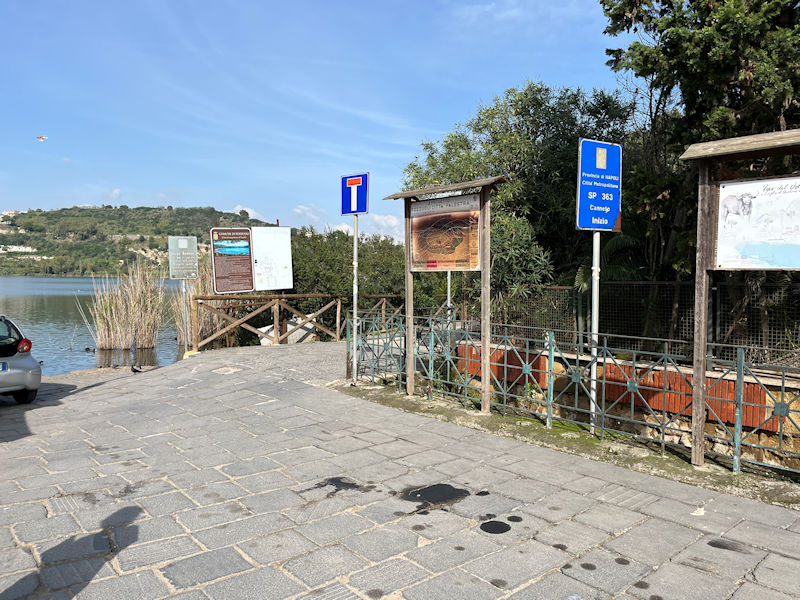
At the start of our lakeside perambulation, a little background. The name Averno is understood to have come from the Greeks of nearby Cumae and to have meant 'no birds there'. If that was true, it was presumably because of toxic gases venting out of the volcanic crater, as we're here in the middle of the Campi Flegrei or Phlegraean Fields of volcanoes well known to the ancients.
Some years ago we visited nearby Solfatara, a lively sulfur venting experience. Kristin loved it, especially the vile fumes, but it's been closed to the public since 2019 for 'safety concerns' (apparently an untended kid fell into one of the vents). See our Solfatara fun here.
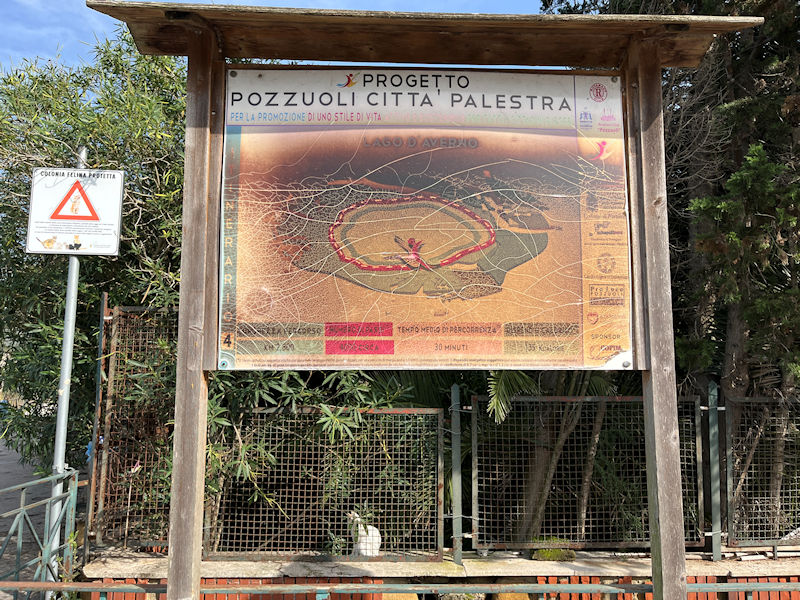
Virgil made a point of the 'underworld' trope in his Aeneid, in which Aeneas descends to Hades through a cave near the lake, but likely the association with Hell or whatever goes farther back than that in Roman lore. There were Greek temples round here (which was a wilderness outside of Greek Cumae at the time), a cave of the Cumaean Sibyl, and the Entrance to the Underworld motif was widespread in classical times.
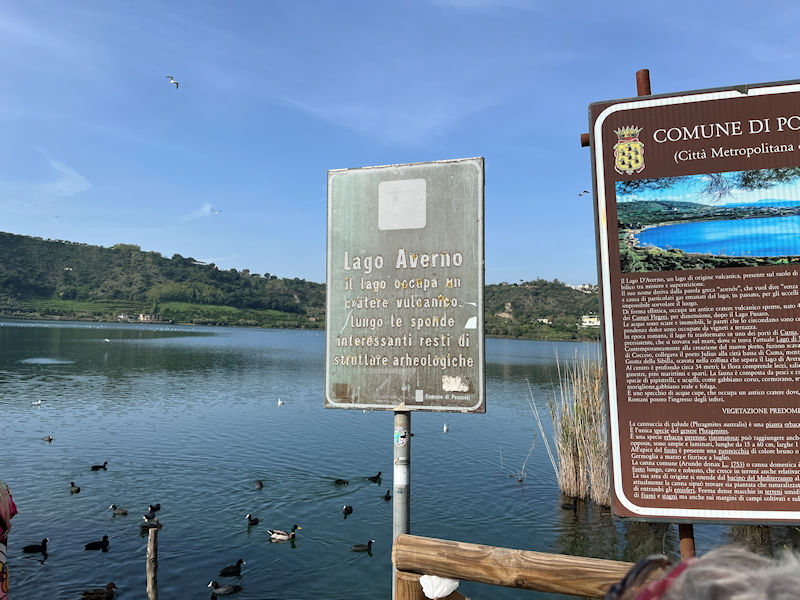
The lake itself is not much above sea level and a max of 118 feet deep, and 2 miles in circumference. In 37 BC, the Roman Agrippa, backing Octavian against Antony in the Civil War, tried to convert the lake into a naval asset, the Portus Iulius. A canal was dug the kilometre or so to Lago di Lucrino on the sea front (where we had lunch), and a half mile long tunnel for vehicles (the 'Grotta di Cocceio') was dug out to the Greek colony of Cumae to the west (that's often described as the world's first major road tunnel, and was functional until destroyed during World War II).
The canal didn't last long even back then; something to do with a rising land surface. But it was probably more or less along the straight driveway we walked to get out here. The Lago di Locrino is said to have been much larger than it is now.
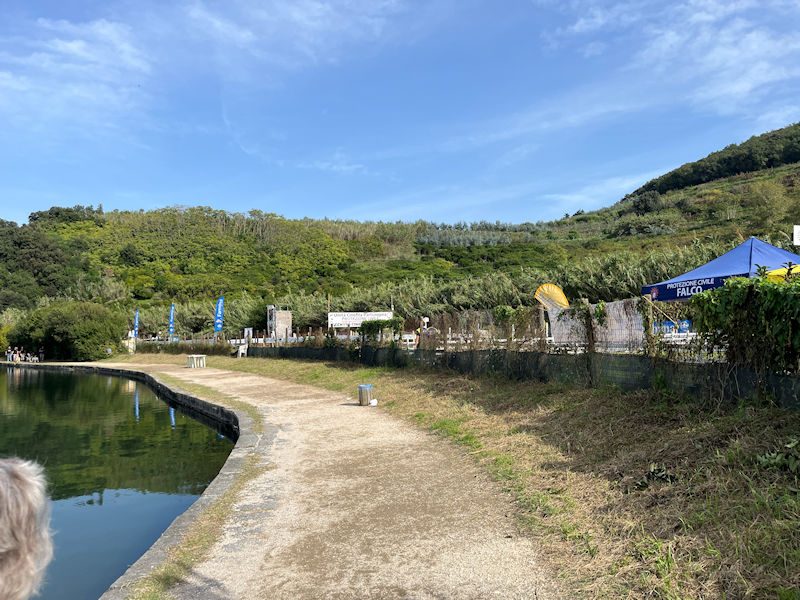
That's a sport facility here near the entrance to the walking path.
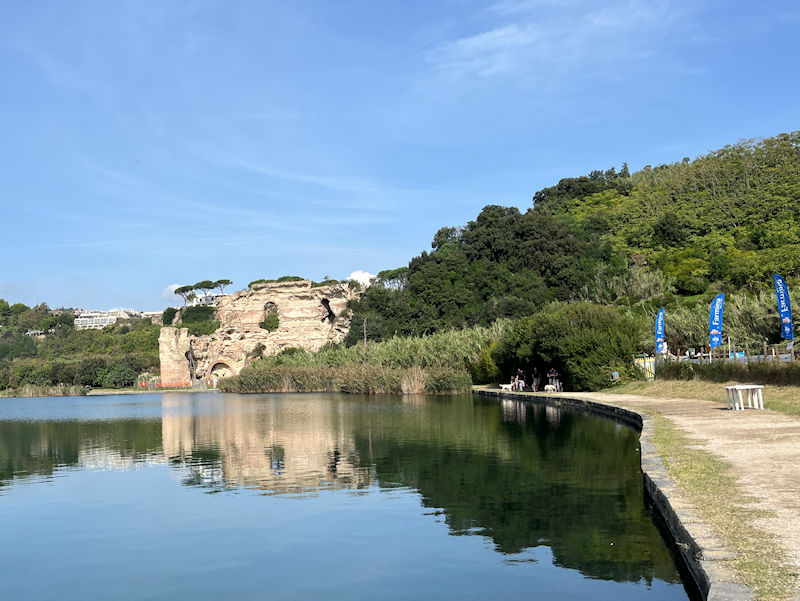
And that must be the former Temple of Phoebus Apollo, and that's a number of dog walkers about to re-enter the dog training facility on the right. The dog training and the sports facility are the last functioning establishments we encountered until the end of our walk.
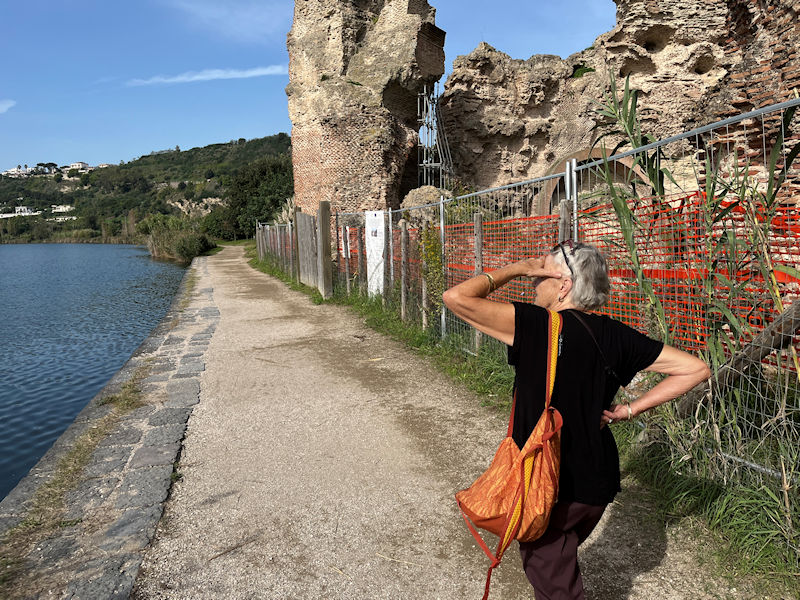
The Temple of Apollo. Past its heyday.
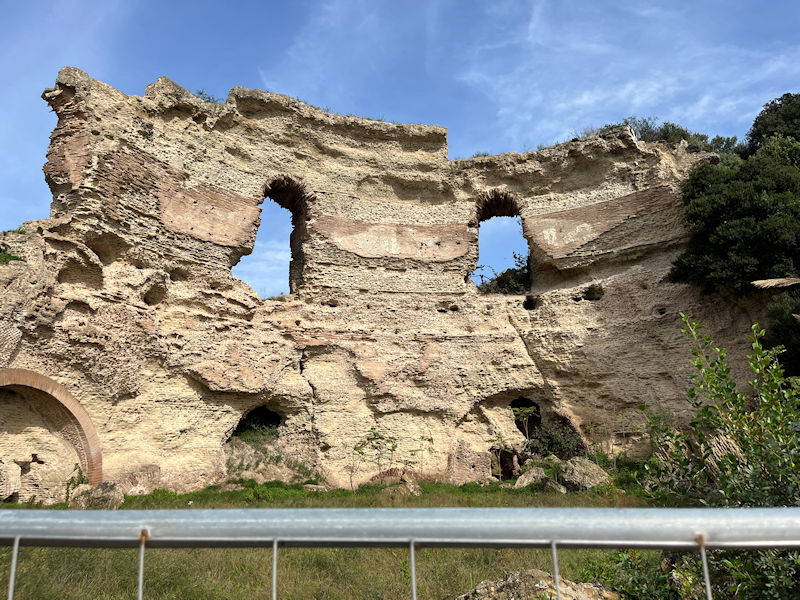
There is said to be the ruins of a temple to Juno here near the shore, but we noticed nothing of the kind.
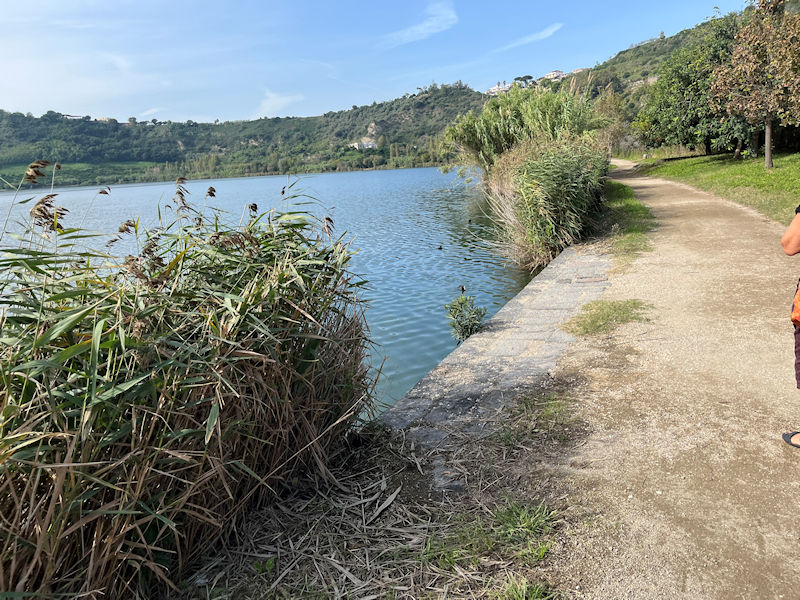
Certainly, there is a Grotta della Sibilla, a rock-cut passage of the Cumaean Sibyl that was once open to the public but is now off limits and 'all but abandoned'. Likewise, the same is true of the tunnel to Cumae, heavily damaged in the war and now off limits as well. We saw nothing of the first of those but probably saw where the Cumaean tunnel comes out.
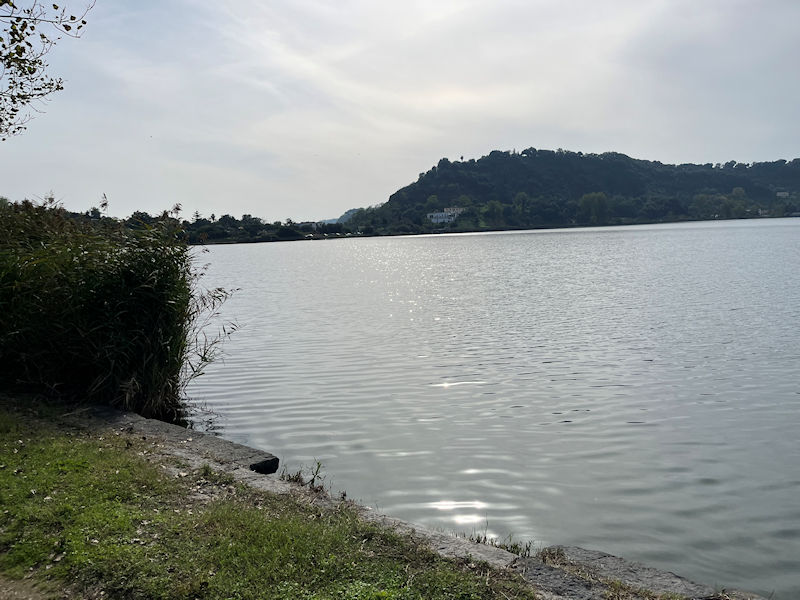
The view across the lake, some 860m (2,800 ft) across

Lago d'Averno
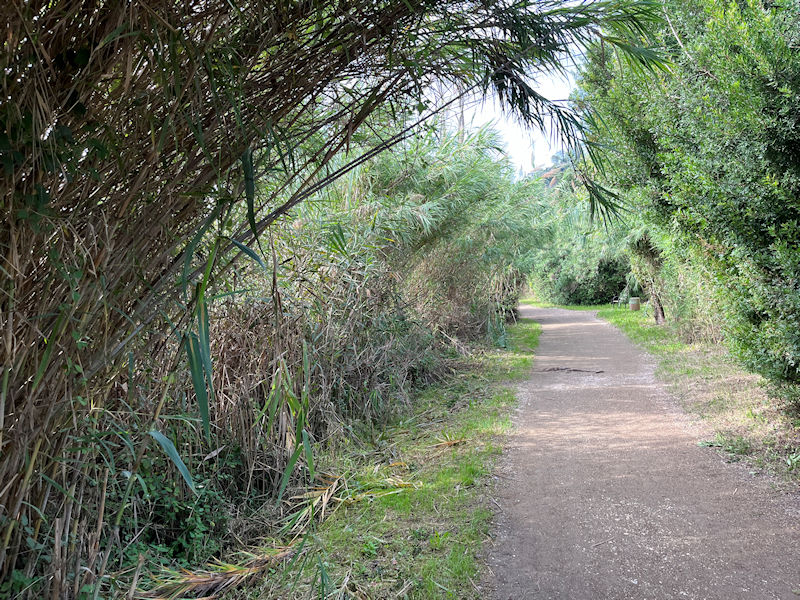
Like a set for 'Ramar of the Jungle' after a little maintenance work
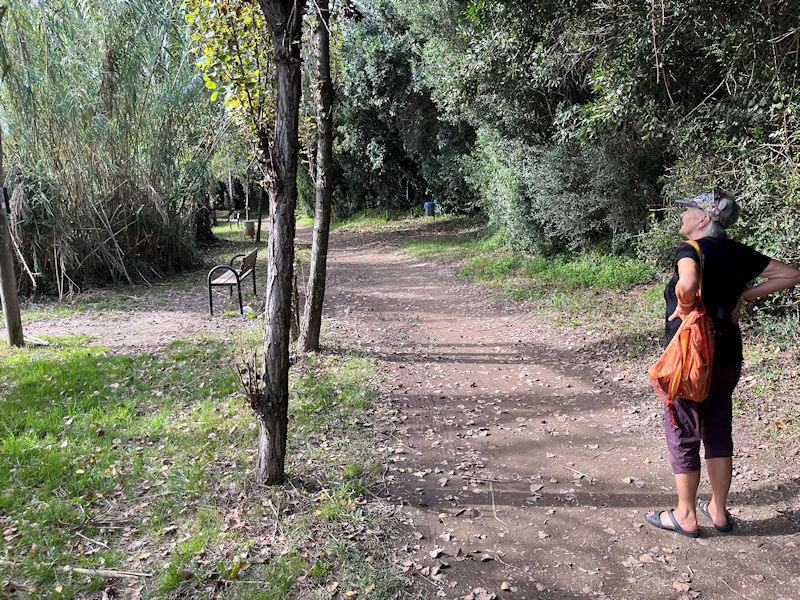
It's cooler here.
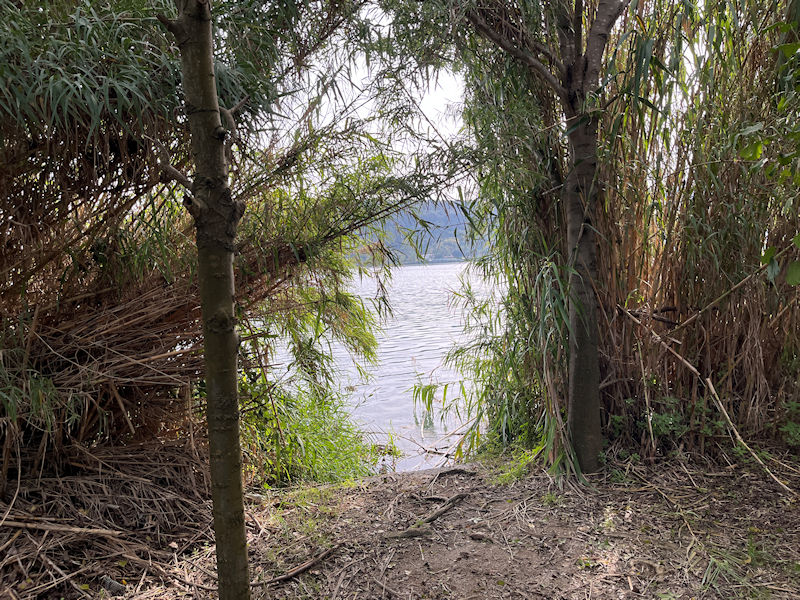
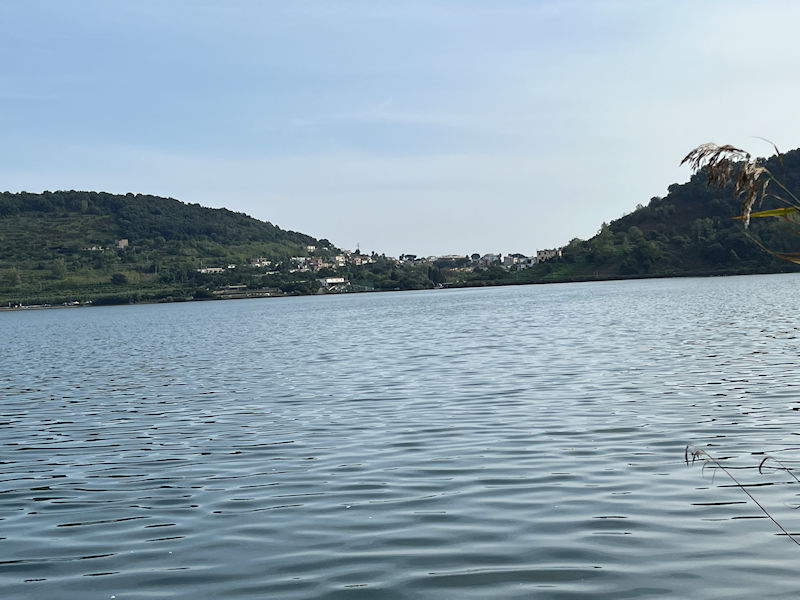

More than halfway, a more civilized sort of path. The water depth might be 118 feet as advertised, somewhere out there, but along here it's about four inches.
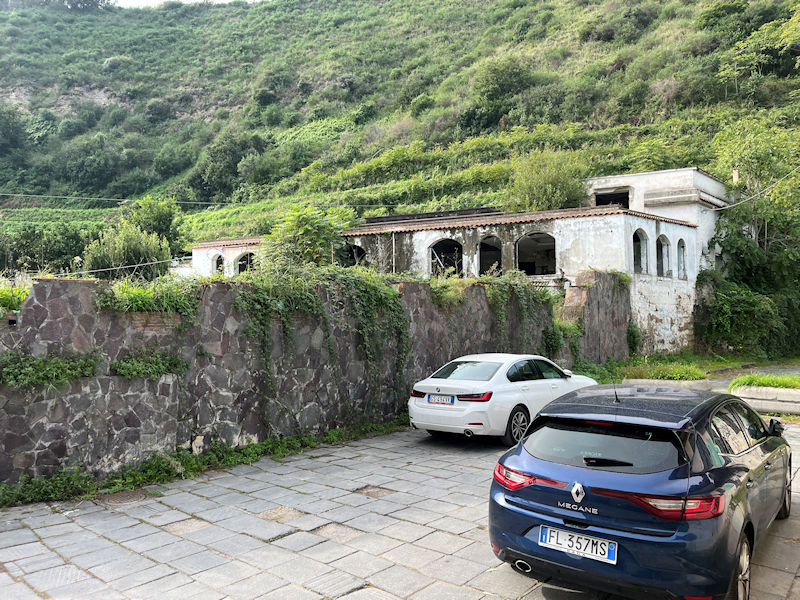
We're more than halfway round now, and apparently it's back there on the right that the now off-limits Grotta di Cocceio tunnel to Cumae begins.
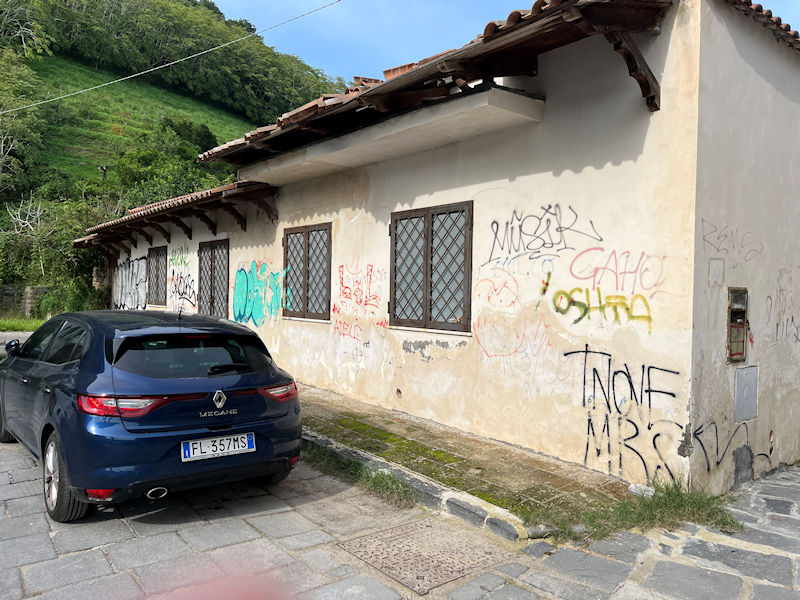
Given these abandoned buildings, there must have been a time when tourists lined up here for a refreshing drink after walking through the tunnel, or something.
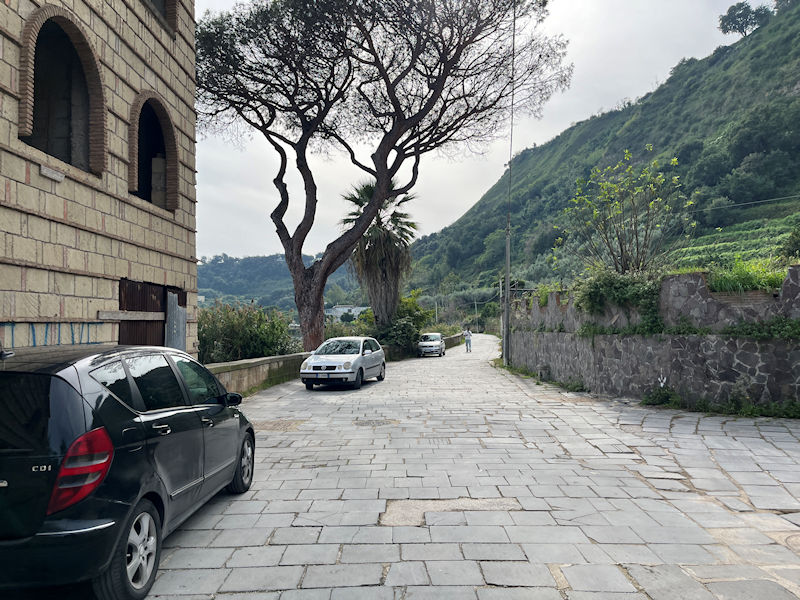
There's a paved road from here on, it seems (its name on the map would be, in English, 'Via Lago Averno right side')
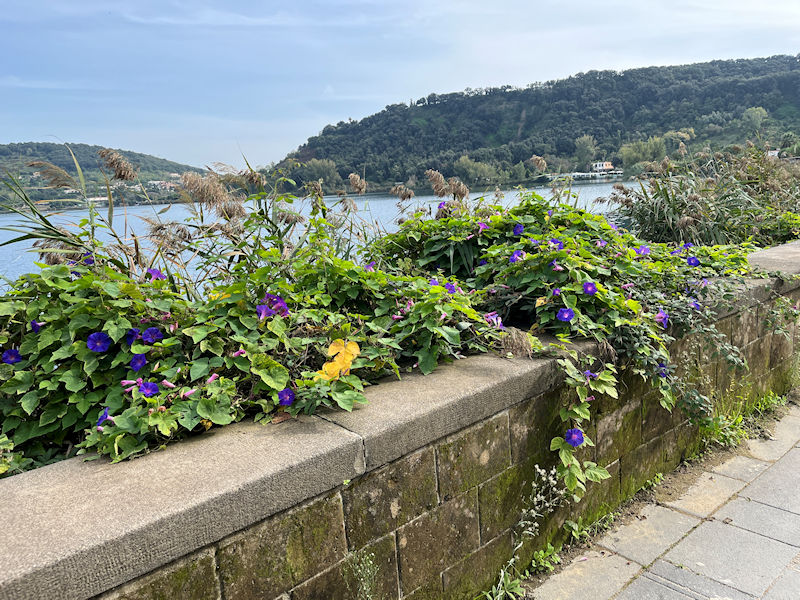
A tiny bit of adornment
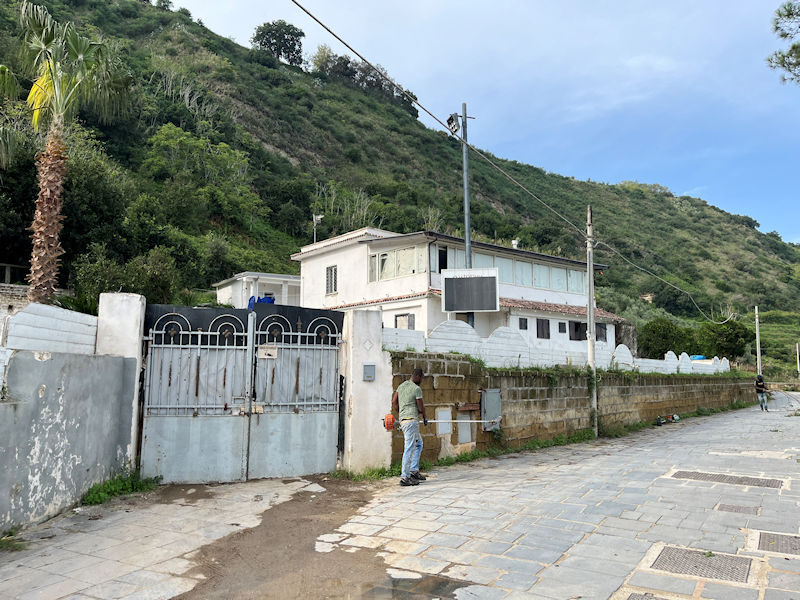
Another building, 250m farther on, a tourist vacation spot perhaps, is closed up tight and needs work, and there are several workers trying to clear out major brush from the shoreline under the barking orders of a supervisor.
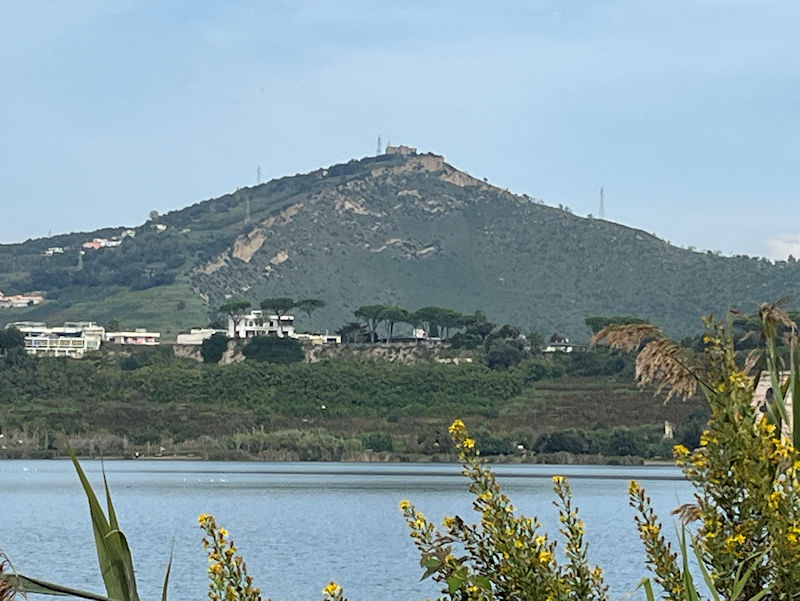
Something potentially interesting sits on top of that hill; at the time, it appeared to be the top of the Cratere di Monte Nuovo, part of the Parco Regionale dei Campi Flegrei, but evidently it's not -- more likely it's the Hermitage [Eremo] of Monte Sant'Angelo.
In some ways, Monte Nuovo ('New Mountain') would have been more interesting to have noticed, but it's rather flat topped now -- it's only had one eruption, Sept/Oct 1538, when it was formed. A medieval village on the Lake Lucrino shores had been a notable thermal bath resort in Roman times, graced for example by Cicero's villa, that was entirely buried by the cinder cone. Earthquakes and other signs between 1969 and 1984 created fears of another eruption, and in September 2023 the concerns of volcanologists were raised yet again.
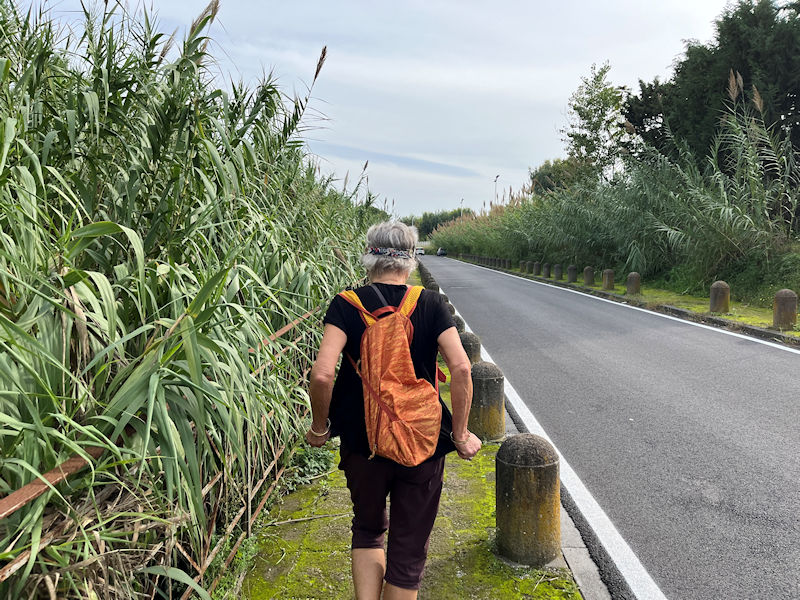
So we'll just hurry along on our way then.
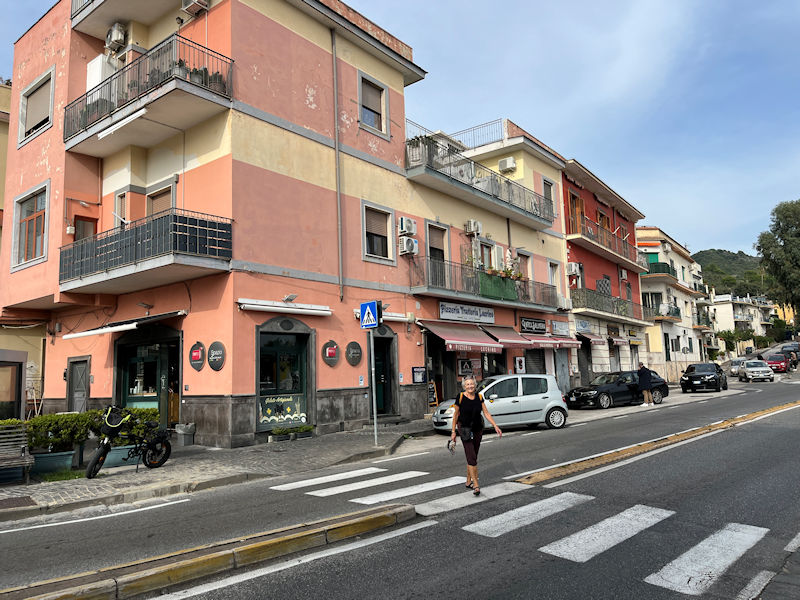
Kristin's been saying goodbye to the couple in the Pizzeria Locrino; they were very friendly.
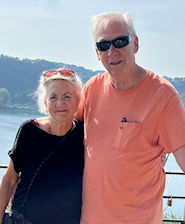 Dwight Peck's personal website
Dwight Peck's personal website
























































